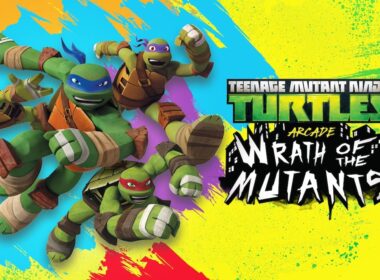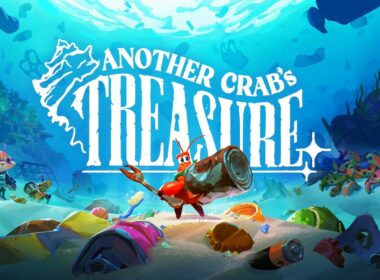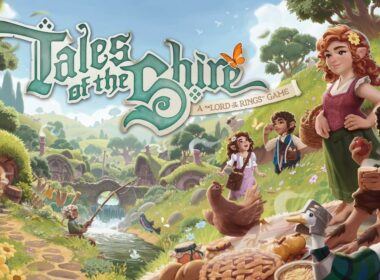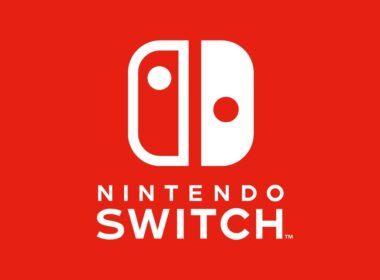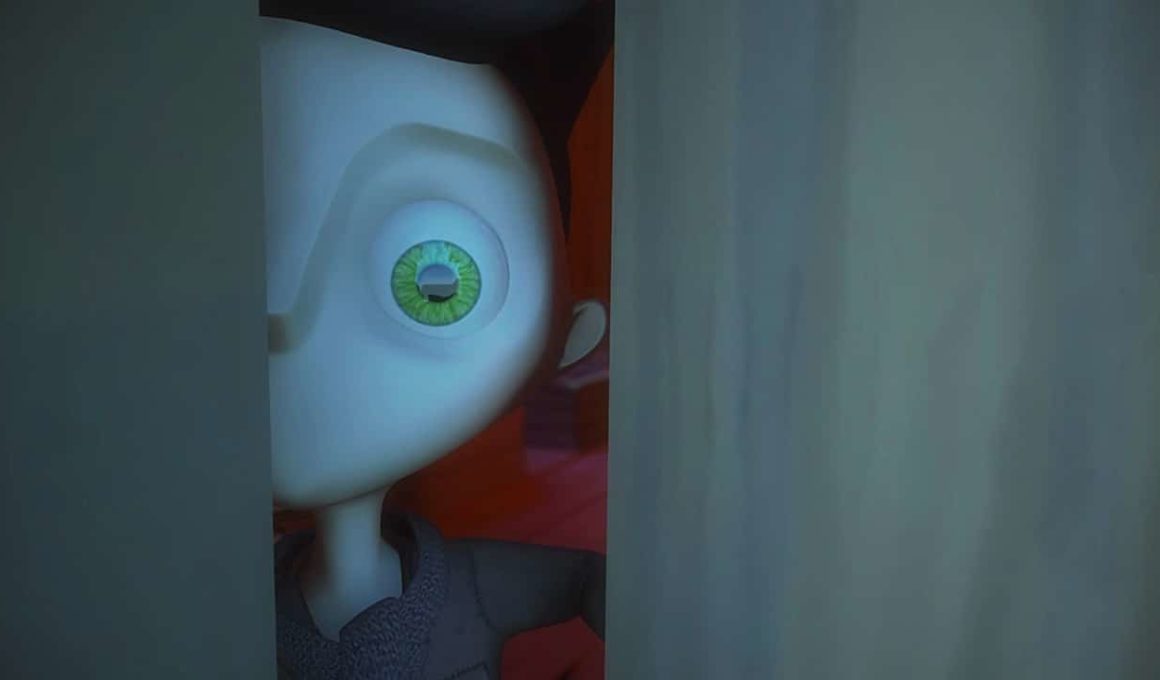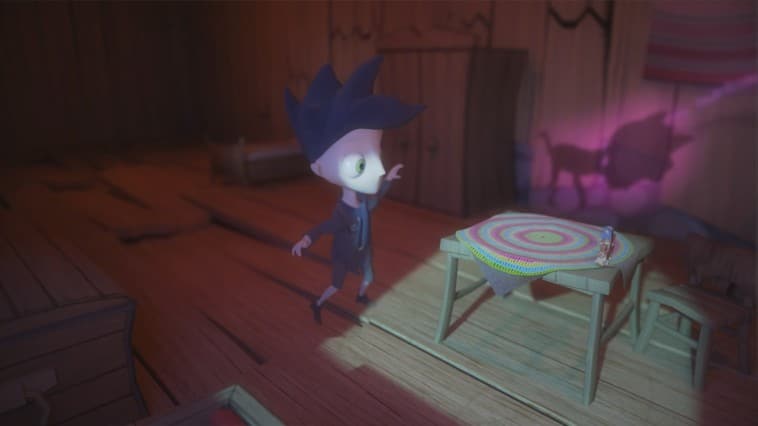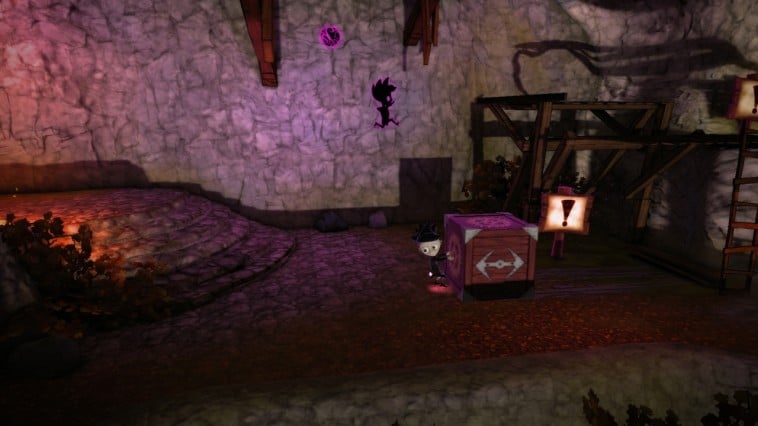When an evil shadow puppeteer separates them from one another, a boy and his shadow set out together on an adventure to free the other shadows that fall victim to his menacing plans.
Sarepta Studio’s Shadow Puppeteer won the 2015 Indie Prize Director’s Choice Award, with the co-op adventure having launched this week for Wii U on the Nintendo eShop. While playable solo, the game really comes to life when another player joins you on your journey in shared-screen co-op – working together to manipulate light in order to overcome the pesky puzzles that block your path.
Our review is incoming, but we had chance to sit down with Sarepta Studio CEO Catharina Bøhler as well as project manager and producer Marianne Lerdahl at EGX 2015, who cast a light over the game’s development!
Nintendo Insider: To start, I wondered if you would mind providing some background on your studio?
Catharina Bøhler: The company is called Sarepta Studio, and it is a Norwegian studio that lies in Hamar – it’s not far from Oslo. It was started in 2010 by 15 students, so we just finished school and decided to start our own company right away. We do our own IP but we also do some professional consulting when it comes to 3D visualisation, so that’s kind of how we began as a start-up.
The Shadow Puppeteer concept was actually pitched to a contest called Dare to be Digital, set up by the Abertay University. The panel there was comprised of a lot of professionals from the industry, and even obviously the scope of the concept was too large for that kind of contest they really, really praised the idea and said we had to go on making the game. From that kind of inspiration, and to be able to have those kind of names and quotes we managed to get some funding from the Nordic Game Program.
NI: Coming out of university and setting up your own studio sounds incredibly ambitious – I certainly had no money or job at that point! Was it through friendships that you collectively came together and, in a way, decided to chase the dream?
CB: Well actually, we had some segmentations of the students. We had different groups making student projects, so not all of us were really that close. But, we just thought about the fact that when we’re done with school do you really want to start four different tiny companies? We were like, actually let’s get everyone together, and especially the fact that a lot of people were like ‘that’s crazy’ or ‘too many people!’ We’re totally doing this! I think it was just the fact that we really wanted to work with what we love.
Marianne Lerdahl: We did a Batchelor that was about game development. But, the game development industry in Norway is still very young. I mean, we have Funcom which is the one big company. As we graduated we saw that there weren’t really that many jobs available in the Norway industry, and not everyone’s keen on moving to San Francisco! We decided that if we want to work with games, we were going to have to make it happen ourselves.
CB: We had seen what each other had done, and we knew that we had a lot of great talent. So we were like, ‘Yep! Let’s just do this!’
ML: What’s the worst that could happen? [Laughs]
All: [Laughter]
NI: You mentioned the Nordic Game Program before, but I wondered if you could talk about the challenges in securing funding for Shadow Puppeteer?
ML: We have an excellent government funding program, it’s part of the state budget that is held for culture, films and theatre. So, games are in there, where they’re considered an expression of Norwegian culture. You are able to apply three times a year, but they have very limited funds compared to other sorts of media.
CB: It’s become more and more competitive, also. There are so many great games now coming out of Norway, that you really have to do well. I mean, the first time we applied for that kind of funding we did get rejected, so we just had to keep on trying.
ML: It’s not necessarily whether they like or don’t like the project, there can be other considerations as well. Maybe they are unsure about the scope, for example.
CB: You are hugely reliant on those kind of grants, and it doesn’t necessarily cover all of your budget either. It does become quite a large personal investment starting up. With your first title, you don’t usually get your big payday until it does well. There was a lot of competition when it came to the Nordic Game Program, and we still managed to get through. That helped us financially, and gave us the drive to get through the harder times.
NI: Did you ever consider crowdfunding platforms, such as Kickstarter?
ML: If you’re an indie developer, you are always considering different ways to raise funds. We decided not to do crowdfunding for our game, and there were many reasons for that.
CB: In the early days it was a lot more difficult for Norwegians to do a Kickstarter, because you needed some connections in the US. We also do know from other companies that we share offices with, that Kickstarters, even though you can be very successful with it, it’s also a lot of work.
ML: A lot of work, and a lot of risk. We just could never defend jumping on that and going for it. I mean, we love Kickstarter and crowdfunding is a great way to get projects that otherwise wouldn’t happen to happen. But, it just hasn’t been the thing for us.
CB: Our company has been partially funded by the consulting work that we do. But, not in a huge way. It has actually been mostly funding of the game, and then, after releasing it on PC, the revenue from that let us keep on going for console.
NI: Funding secured, development continued and everyone was hard at work. From that point until now, what has happened in time?
ML: We began development in November 2010. That was when we got the grant from the Nordic Game Program, and we released on PC in September 2014. It was roughly four years, but bear in mind that at the same time we were doing consulting work. But since then, it’s been roughly a year that we have spent on optimising and porting it to Wii U.
NI: Wii U is such a perfect home for Shadow Puppeteer in terms of the console’s audience. But, is the porting process part of a wider plan to publish it on other consoles?
CB: The Wii U is a console that we really feel fits our game perfectly, because it has such a high focus on the enjoyment of getting people together. The style really fits I feel, and a lot of us are Nintendo fans! So, that is really the kind of true home for the game.
Of course we have also looked at the opportunity of other consoles, but that isn’t something that we’ve gotten so far with that we feel comfortable talking about yet.
NI: How have you felt being part of the ‘Nindies?’ Nintendo’s efforts with the independent development community seems to have really broken down a barrier, which means that they are now seen to be far more approachable.
ML: We’ve always had a very good relationship with Nintendo. They have always been incredibly helpful, obliging and lovely, so we love working with them. As you say they used to seem closed, but we haven’t experienced that at all. They have been super easy to work with, and it seems like they genuinely want to bring good indie titles to the Wii U. And that’s a very good thing, I believe.
NI: Has that helped to encourage you to consider either Wii U or Nintendo 3DS for any future projects?
CB: We can’t comment on any further projects, but we would definitely want to continue to work with Nintendo.
ML: I would love to work with them again, because they’re so wonderful to work with! [laughs]
Everyone: [laughter]
NI: Having released on PC first, were there any challenges in porting the game across to Wii U? Did anything have to be reworked?
ML: When we released for PC, suddenly you have a large group of people playing your game and being very vocal about what they think – as the Steam community is! So we got a lot of wonderful feedback, and instead of ignoring it we listened. We have been changing so many things with our game over the past year, it’s been like a major update. It’s not just taking the same thing and it’s on Wii U, it is making it infinitely better. We reworked the controls, reworked the graphics. We’ve tweaked the levels to improve the flow, as we could see where people struggle and where it could be better.
NI: Do you see value in schemes such as Steam Greenlight, where you can release games and receive that sort of feedback ahead of release?
ML: It’s hard to comment on Greenlight, because the way it used to be was only a few titles every now and again that were carefully moderated. Whereas now all the games come out, everything’s on Greenlight and it’s being greenlit. You see that with the spike of releases on Steam over the past year, it’s skyrocketed.
CB: I do really like the feedback, and managing to see how people react. But I think at the same time, it’s important to have the people working on the platform actually also running through the game. It’s not just about the public, but I think it should be like a kind of co-operation.
ML: It’s definitely good to listen to what the players want. I think it’s also good to be involved in the process, and looking at the project and doing a bit of consideration there. There are too many titles where the odds are that good things never get the attention that they need, that increases. Then you get titles that aren’t necessarily good games, but are punch lines of a joke that people just spread virally because they had five minutes of fun. Not that I have anything against those games… [laughs]
NI: Each year we see successive sequels in larger franchises, which, while I can see why many still enjoy them, I start to feel fatigued by. I feel like indies have filled a part of the industry where there is more creative freedom to explore new ideas, and I find that far more exciting… I wasn’t sure where I was headed in adding a question to that!
Everyone: [laughter]
NI: Having started your own studio did you find it allowed the necessary flexibility to experiment, eventually discovering a concept that you could all became passionate about?
ML: There are two sides to it. On the one hand you have the technical aspect. If you have a new and exciting gameplay mechanic, you may not know if you can do it or if you can do it well. With indie projects you see people spawning new things, and that’s great. But, it’s a risk and I understand that large companies can’t necessarily take that risk in the same way.
I certainly believe we enjoy having our creative freedom, and I do think we made a lot of creative choices for the game and its expression that definitely would not have happened at a larger, more established studio. That could be an expression of our culture, but it could also just be us, our identity and strong vision for the game.
CB: I think we do notice in the team that it’s really exciting to sit down, and decide to make a small game. It’s great to have everyone in the company pitch new ideas – pitching, arguing (in a good way!), going back and forth, being really passionate and trying to convince one another. Suddenly you see everyone banding against one concept, and everyone is excited about pursuing it.
NI: I feel that Nintendo have tried to discover and nurture that ‘indie spirit’ internally, allowing teams to explore and pitch new concepts. That’s how the idea for Splatoon appeared, and it’s been such an incredible success for them.
ML: It seems to me that Nintendo has been one of the developers that focus on always having something new and exciting in their titles. I think that’s really cool. For instance in the latest Zelda game that I’ve played, A Link Between Worlds, I love that new mechanic that lets you go into the walls and move along them. Kind of like Shadow Puppeteer… [laughs]
Everyone: [laughter]
NI: It’s such a brilliant game, I love it when you travel between worlds by slipping through cracks. It looks like you’re tripping out every time! [laughs]
Everyone: [laughter]
NI: Back to Shadow Puppeteer! When we played it earlier, I really liked how each player must closely work together to progress. Even though each character is controlled separately, co-operation was always key to successfully solving puzzles. Was that always a key ambition?
CB: We’ve really been working at making a true co-op game where both characters are as active and meaningful as one another. It doesn’t just feel like you have one person playing the game, and the other person’s tagging along for fun. You really do need each other, and that’s actually been our biggest challenge. I think we’ve thrown away so many levels and done so many iterations, because we had to make sure that if you played this you felt like you were the main character.
We did start doing local test sessions in the office, where we set up a form that asked who the tester was playing and who they felt had the most to do. When we knew that a level was perfect was when they always said that they thought that they had the most, and that the other player said the same.
NI: At this point I have only played part of it, but it feels like a dark fairytale in many ways…
ML: As Scandinavians we always have to throw in some darkness! [laughs]
Everyone: [laughter]
ML: It’s kind of a gloomy game in a sense. We really like that atmosphere, and we wanted to go for something that felt lonely and to just focus entirely on these two players. Because it would have been an entirely different experience if you had been in a cheerful village, a baker running around and a fisherman sat fishing. It’s just the two of you, and you’re on this journey by yourselves.
CB: We try to strip away everything else. There’s no dialogue in the game, we try to have as little text as possible and we’re just creating this atmosphere – using graphics and the amazing music. It creates an atmosphere where the only thing that is important is you and the other person.
NI: If I gave you 30 seconds to sell someone on the game that hadn’t heard about it, do you think you could?
CB: Sure!
NI: Great… go!
CB: Shadow Puppeteer is a beautiful and atmospheric local co-op adventure, where you play as a boy and his shadow who have been separated by the evil Shadow Puppeteer. So, using the atmosphere and really clever but decipherable puzzles, it makes it a game that is really good to play not only with friends, but with significant others and children.
NI: You’ve got five more seconds!
CB: [laughter] … and it’s really fun and cool!
NI: [laughter] Great! Thanks to you both for your time!
Shadow Puppeteer is now available for Wii U on the Nintendo eShop in Australia, Europe, New Zealand and North America.

